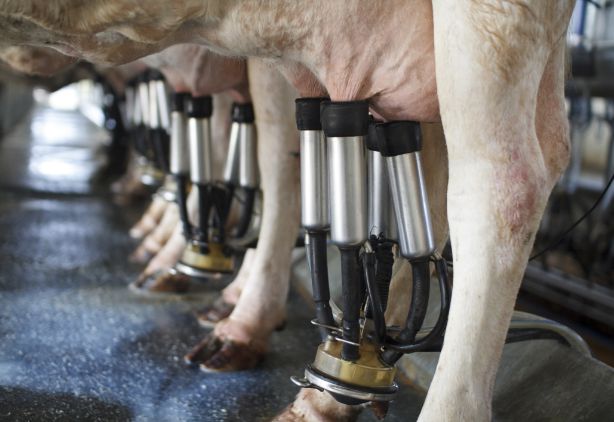Dairy Revenue Protection (DRP)
Since its introduction in October 2018, Dairy Revenue Protection (DRP) has quickly become an essential risk management tool for dairy producers. Whether you are just starting with risk management or consistently hedging for years, DRP is an excellent tool for all producers.

What Is Dairy Revenue
Protection?
Dairy Revenue Protection is a federally subsidized insurance program designed to protect dairy producers against unexpected declines in milk revenue (price and yield).
Coverage periods are quarterly and are available up to five quarters in the future. Producers can choose from various pricing options and coverage levels to match their milk utilization, component structure, and financial goals.
How Can I Buy Dairy Revenue Protection?
To purchase Dairy Revenue Protection, you must set up a policy. The process is quick and easy and requires minimal paperwork.

The 5 DRP Coverage Decisions
1. Coverage Period
Quarterly, available up to five quarters into the future.
2. Declared Milk Production
You can declare as little or as much as they want per endorsement and may purchase endorsements totaling up to 100% of your quarterly milk production.
3. Protection Factor
Optional enhancement for your declared milk production. By increasing the Protection Factor the effective milk production covered by an endorsement can be increased by up to 1.5x.
Declared Milk Production x Protection Factor = Effective Milk Production Covered
4. Pricing Option
Class Pricing: Class III / Class IV futures determine the expected milk. Producers can select a weighting for each class.
Component Pricing: Component values based on the futures settlements of individual commodities (ex. Expected Butterfat Price is based on CME Butter Futures). Producers can select a weighting for Class III / Class IV as well as their herds projected component production levels.
5. Coverage Level
Choose how much of your expected quarterly revenue you would like to cover. Levels ranging from 80% to 95% in 5% increments. Premium subsidy percentage based on selected Coverage Level.
Interested in determining what type of coverage is right for you?
How Much Does it Cost?
Premiums vary based on coverage selections, coverage horizon, and market volatility. Premium subsidies make
coverage very affordable and are dependent upon the selected Coverage Level.
| Coverage level | 95% | 85% | 90% | 80% |
| Premium Subsidy | 44% | 44% | 49% | 55% |
How Are Losses Calculated?
Guaranteed Revenue
Expected Milk Price x Coverage Level = Guaranteed Revenue
(Also referred to as Trigger Price when converted to $/cwt)
Yield Adjustment Factor (Based On State Or Region)
Actual Milk Production per Cow ÷ Expected Milk Production = Yield Adjustment Factor
Actual Revenue
Actual Milk Price x Yield Adjustment Factor = Actual Revenue
Loss Determination
Guaranteed Revenue > Actual Revenue = Actual Revenue
Guaranteed Revenue < Actual Revenue = No Loss
Loss Amount
(Guaranteed Revenue – Actual Revenue) x Protection Factor = Loss Amount
How is Coverage Settled?
Coverage is settled after the USDA Milk Production Report is published for the final month in the quarterly coverage period. This is typically around the 20th of the month following the end of the quarter (ex. late April for Q1). Producers will then be notified about any losses or premiums due.
Loss
A notice of probable loss will be sent to you along with a milk production worksheet. Milk production records for the three months covered must be submitted along with the milk production worksheet for the claim to be processed.
No Loss
A billing statement will be sent to you for the premium amount due for the coverage.